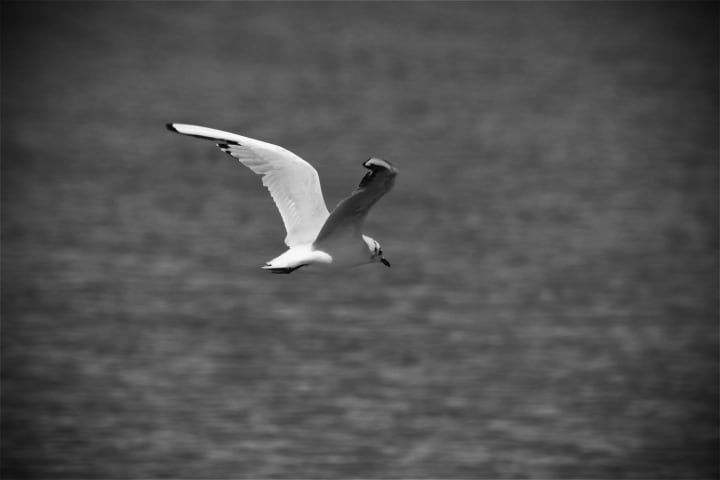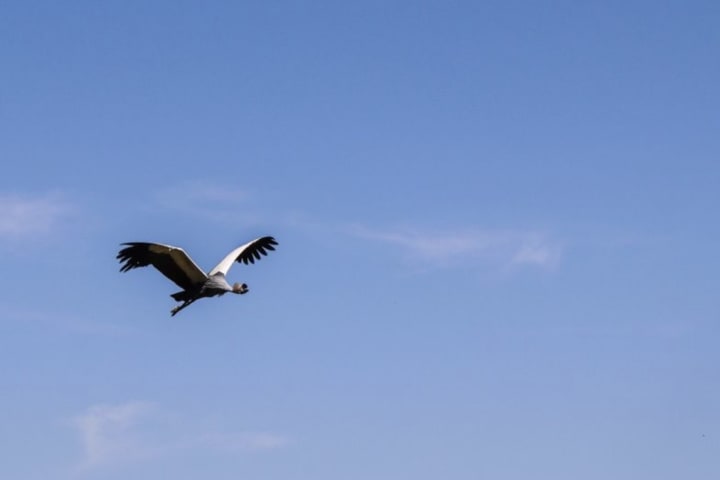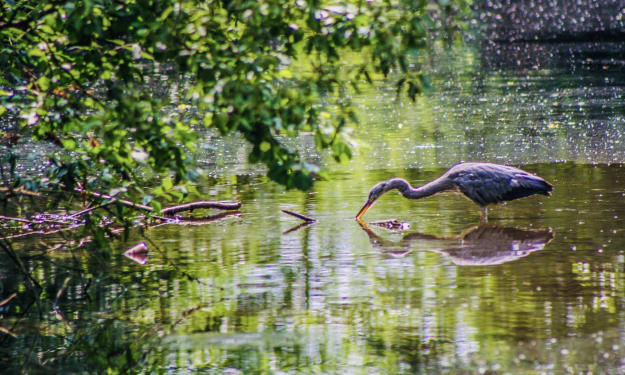Birds in Flight
Mastering the art of how to photograph flying animals

“In order to see birds it is necessary to become a part of the silence.” - Robert Lynd
The days are getting longer again; the temperatures are rising to a pleasant level and we are spending more time outside. Every morning, the songs of birds wake us up; bees are buzzing around and even the first ladybirds have already appeared. The nature is awakening to new life and is just waiting to be discovered by us again. And, of course, we photographers looking forward to capture great shots.
That is why I give you a few tips on how to elevate your summer adventures to capture birds in flight. From choosing the right equipment to perfecting your panning technique, I will give you an insight into how to snap stunning shots of these winged winders in action.
It all started with my little gray heron in Mon Choisy, Mauritius. For a long time, he just stood on his boulder searching for fishes. It took almost two years before I captured him after such a successful hunt. At the same evening, I took some photographs him as he began flying. I was too unexperienced to nail those shots.
Capturing animals in flight is a thrilling and rewarding aspect of wildlife photography; it requires patience, skill, and a good understanding of both your equipment and the behavior of the animal.

- CHOOSE THE RIGHT EQUIPMENT: While any camera can capture animals in flight, a camera with a fast autofocus system and high continuous shooting speed will improve your chances of getting sharp images. Some photographers use the serial function, but I normally decide against it, because it is quite limiting. A telephoto lense with a focal length of at least 300mm is also essential to bring distant birds closer.
Small extra tip: train using the camera with a telephoto lens first, because the weight can make it hard to keep the needed balance. At the shooting, you need to act fast and keep the camera balanced and steady, what require a bit of training.
- UNDERSTAND ANIMAL BEHAVIOR: Observing the behavior of the animal you want to capture is crucial. Study their flight patterns, preferred habitats, and feeding habits. There might be differences even within one species, but their patterns are alike. The more you know, the better will be the result. This knowledge will help you anticipate their movements and you can position yourself accordingly.
- SELECT THE RIGHT LOCATION: Your chances are best when you choose a location where the animals are abundant and where you can easily observe and capture them without disturbing their natural behavior. Large flower beds provide a rich buffet for many species of bees, butterflies and beetles. Wetlands, shorelines and river banks are great places to find a variety of bird species.
- Small extra tip: The fewer people are visiting the place, the better for us. Animals often behave differently in places with high human traffic; hectic movements and loud noises can startle them ruin the photo at the end.
- USE CONTINUOS AUTOFOCUS (AI SERVO): Flying animals move quickly and often unpredictable, so it is important to use your camera’s continuous autofocus (often called AI Servo) to keep them sharp as they move across the frame. Of course, it is possible to get good shots without using the AI Servo, but the failure rate is significantly higher and it takes a lot of practice to get it right; and wild animals are not famous for giving us much time.
- OPTIMIZE SHUTTER SPEED: A fast shutter speed is essential for freezing the motion and prevent blur. You should aim for a high shutter speed of at least 1/1000 sec, even faster if you shoot the flying objects in low light.
- Small extra tip: Instead of setting your camera to Manual (M) mode, use the Shutter Priority (Tv) mode. Light conditions can change faster than our eyes recognize it. The Shutter Priority allows us to focus us on the object.
- PRACTICE PANNING TECHNIQUE: Panning involves following the movement of an object with your camera while keeping it in focus. This technique allows you to capture the animal in sharp detail against a blurred background, creating a sense of speed and dynamism in the photos. Practice the panning technique by tracking moving objects like cars, trains or cyclists before attempting to capture birds in flights.
- Small extra tip: No matter how good tripods have already become, their movements is limited and wild animals often exceed this limitation. Often you get the best result with a handheld camera.
- COMPOSITION BY INSTINCT: While capturing a sharp image is important, don’t forget about composition. Aim to capture animals against a clean background to make them stand out. Consider the “Rule of Thirds” to create a balanced and visually appealing composition. Since flying animals act unpredictable, you need to get the composition rules burned into your instinct so that you automatically can apply them within seconds.
- Small extra tip: While it is usually quite easy to shoot a flying bird against the sky, with insects it becomes much more challenging. A green lawn, or foliage, can provide a calm background. Start by looking for such a scenery and wait until the animal comes into range. Later, you can edit any deviations at the edges.

I hope these tips and techniques will be helpful on your way to capture stunning images. Remember, practice makes perfect, so do not get discouraged if you do not get the perfect shot right away. Keep practicing. Learn from your mistakes, and experiment with different techniques and settings.
I still have one last request for you. People often neglect it in wildlife photography, but it is one of the unbreakable rules in lost-place-photography: RESPECT WILDLIFE! Finally, always prioritize the well-being of the animals and their habitats. Avoid disturbing nesting sites or approaching birds too closely. Leave the place as you found it. Take everything you brought back with you; after the shooting, nothing should indicate your presence. Outside of regular routes, take care that you do not cause a mass migration to these places. And last but not least: Neither put the animal’s safety nor your own at risk for the sake of a photograph.

Thank you for reading! Please subscribe to my channel for more tips. Your support with each tip and pledge will help me in my ongoing development and the funding of new projects.
About the Creator
C.B. Visions
An author, who writes tales of human encounters with nature and wildlife. I dive into the depths of the human psyche, offering an insights into our connection with the world around us, inviting us on a journeys. (Christian Bass)






Comments (1)
Some excellent observations and photgraphs